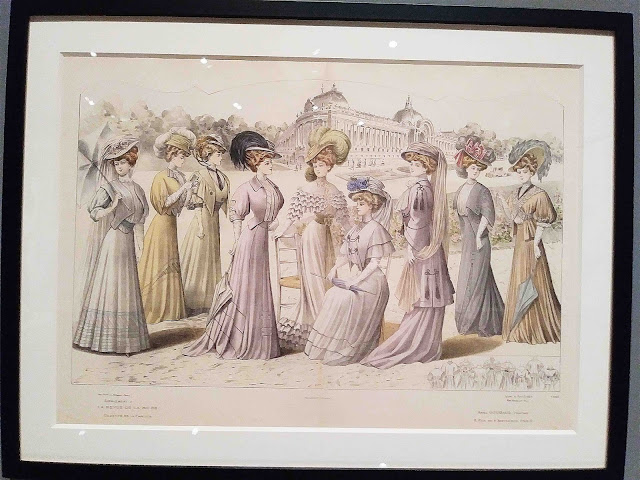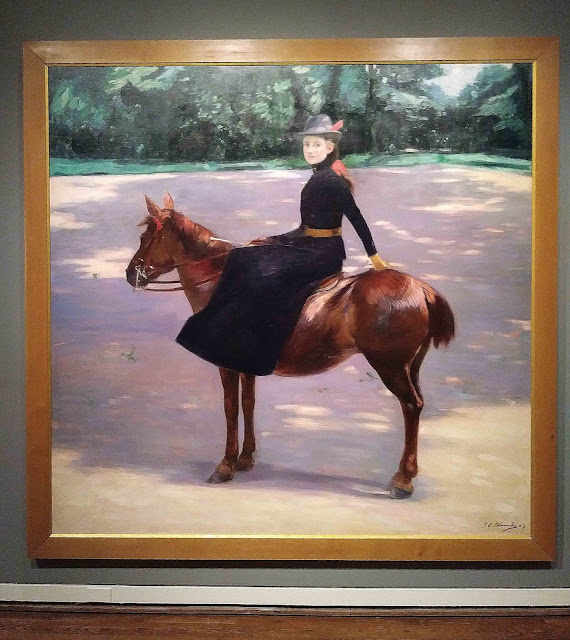Portland Museum - Paris 1900 Exhibition Review - Part 1
It was so wonderful to visit today Paris 1900 Exhibition in
Portland Art Museum. Many beautiful paintings and sculptures in the Art Nouveau style and beyond are amazing. I am placing most part of the exhibition in this article. But the Part 2 is in the previous post is HERE
And I couldn’t agree more with organizers of the museum who said
the following:
Travel back to Paris at the dawn of the 20th century and
experience the splendor of the sparkling French capital as it hosted the world
for the International Exposition of 1900. This was the height of the Belle
Époque, a period of peace and prosperity in France when fine art, fashion, and
entertainment flourished as never before. Fifty-one million visitors from
around the world attended the Exposition and flooded the city, where they
enjoyed its posh restaurants, opulent opera house, artistic cabarets, and well-tended
parks. For the French, it was an opportunity to show off their prowess in the
arts, sciences, and new technology, and to highlight what made Paris unique
from rivals London and Berlin.
Inspired by an exhibition originally presented in 2014 at the
Petit Palais in Paris, Paris 1900 re-creates
the look and feel of the era through more than 200 paintings, decorative art
objects, textiles, posters, photographs, jewelry, sculpture, and film, and will
plunge visitors into the atmosphere of the Belle Époque. These objects, drawn
from several City of Paris museums—including the Petit Palais, the Musée
Carnavalet, the Palais Galliera, the Musée Bourdelle, and the Maison de Victor
Hugo—form a portrait of a vibrant and swiftly changing city.
The splendor of Paris unfolds in six sections or vignettes. The
visitor enters “Paris: The World’s Showcase,” which highlights the
International Exposition of 1900 and the sweeping architectural and
technological changes made to the cityscape to welcome the new century. As
Paris was also the self-proclaimed “Capital of the Arts,” the second section of
the exhibition examines the vast range of styles and talent present in the city
in the form of sculpture, painting, and prints. Viewers will delight to work by
well-known artists such as Camille Pissarro and Berthe Morisot and will
discover compelling paintings and sculpture by lesser-known masters of the
time.
The seductive Art Nouveau style, so popular in the decorative
arts, is the focus of the next vignette, which features furniture, jewelry,
pottery, posters, ironwork, and fans that exhibit the whiplash curve and
natural inspiration of this international style.
French fashion and style were at the heart of Parisian pride,
and the next section examines the cult and myth of la Parisienne—the ideal
French woman—through textiles, paintings, prints, and decorative arts.
Strolling through the city was considered one of the great Parisian pastimes
and is explored in “A Walk in Paris.” New modes of transport, such as the
omnibus and the newly invented bicycle, competed with horses, pedestrians, and
automobiles as the 20th century unfolded. The final vignette, “Paris by Night,”
features a selection of the vast amusements that made Paris the center of
European entertainment, from lowly cabarets to the most refined theaters and
restaurants. The exhibition concludes with a look at a great French invention
of the Belle Époque: the moving picture. Clips from early film animate the
exhibition and allow the viewer to rediscover the dawn of cinema.
Live To Create!!
:)

































































